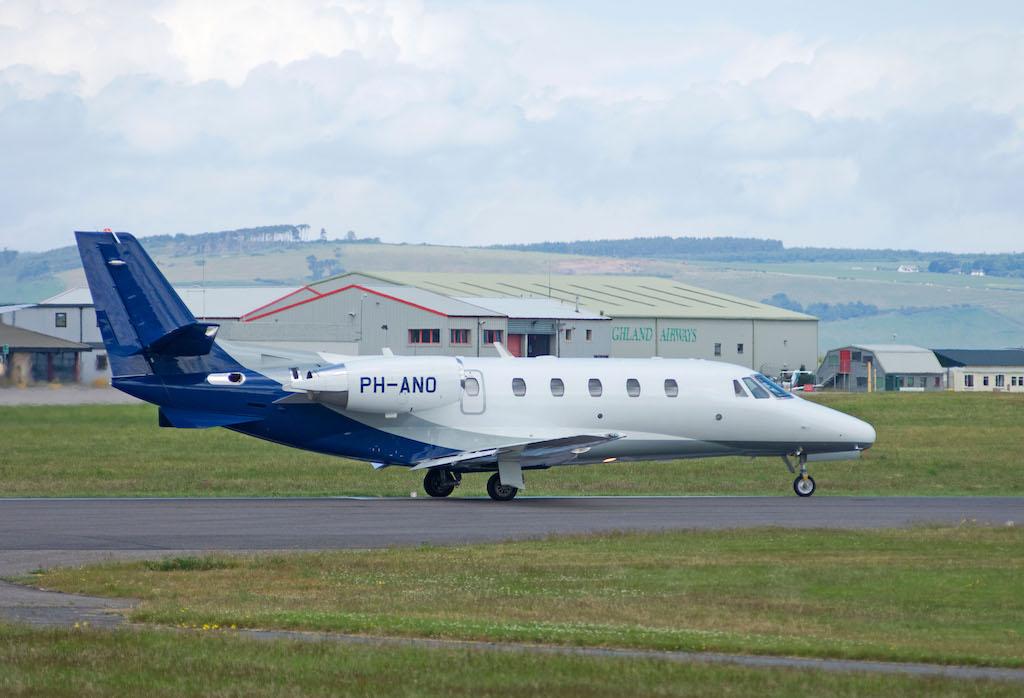
Your airplane is down for unscheduled maintenance, and the boss needs to fly tomorrow. Your friends at the flight department across the ramp fly virtually identical equipment, and their schedule is clear. Why not just have them fly the boss tomorrow, and you will owe them the favor? If no money changes hands, there should not be any legal problems, right?
With a little pre-planning, there will not be any legal problems with trading time with another flight department, but it would be difficult to get everything done the day before a trip.
First, the FAA issues: 14 C.F.R. § 91.501(c)(2) defines an interchange agreement as “an arrangement whereby a person leases his airplane to another person in exchange for equal time, when needed, on the other person’s airplane, and no charge, assessment or fee is made, except that a charge may be made not to exceed the difference between the cost of owning, operating and maintaining the two airplanes.”
If the other flight department is going to fly their aircraft for your company, then they are providing you with a “wet lease,” and you will be wet leasing your aircraft when you return the favor. “Wet lease” is defined in 14 C.F.R. § 119.3 as “any leasing arrangement whereby a person agrees to provide an entire aircraft and at least one crewmember. A wet lease does not include a code-sharing agreement.”
It is important to understand this definition, because it clears up several misconceptions that are common in the industry. A wet lease has nothing to do with whether fuel is provided as part of the agreement. This rule also shoots down the common belief that it is ok to provide the co-pilot with the plane and state that the lessee has operational control because they provided the pilot in command.
Splitting a crew is not acceptable under the regulation, and experience shows that it may not be safe, either. The 1996 Gulfstream IV accident at Chicago Executive Airport (then called “Palwaukee”) illustrates the importance of pre-planning an airplane swap. The National Transportation Safety Board listed as contributing factors to this fatal accident: “the lack of standardization of the two companies' operations manuals and interchange agreement.” It is rare for a legal agreement to be listed in the contributing factors to an accident, and it should alert corporate lawyers to the fact that there are worse things in life than a surprise Internal Revenue Service (IRS) audit. This should also alert the flight department to make sure that its insurance carrier approves of and will cover any proposed interchange.
Corporate lawyers will want to know that the IRS considers an interchange agreement to be subject to the 7.5% federal excise tax (commercial FET), although credit would be given for the fuel FET paid on the interchange flights. This means that each lessor (aircraft provider) will be required to collect the taxes (along with the appropriate segment fees) and remit them to the IRS on a quarterly basis, using IRS Form 720. Because this is a “barter” arrangement, it is wise to state a value in the interchange agreement for the use of each airplane, so that the accountants know what number to multiply the 7.5% against.
Who can enter into an interchange agreement? The FAA has issued very strict interpretations that are not well known. For instance, 14 C.F.R. § 91.501(a) limits the applicability of the rule to large and “turbojet-powered multi-engine civil airplanes of U.S. registry.” Turbopropeller-powered airplanes are not turbojet powered, and 14 C.F.R. § 91.501 is not applicable unless the turbopropeller-powered airplanes are large. In other words, a King Air B200 cannot be part of an interchange agreement, simply because it is a turboprop instead of a turbojet.
There is a simple solution for operators of aircraft who want to interchange platforms that do not meet the strict applicability of the rule. The National Business Aviation Association (NBAA) has an exemption available to all of its members so that they can take advantage of time-sharing agreements and the other cost-recovery methods found in 14 C.F.R. § 91.501. However, it is vital for members to obtain a copy of Exemption 7897 and comply with each of its provisions, which include contact with the local FAA Flight Standards District Office. At least one pilot has suffered a 90-day suspension for failing to follow the exact provisions of the exemption.
There are several other restrictions on the applicability of interchange arrangements.
Several FAA Chief Counsel opinions interpreting 14 C.F.R. § 91.501(b)(6)—which is the paragraph authorizing, rather than defining, interchanges—have stated that only a “company” may provide an aircraft and crew under that rule.
Because an interchange agreement is a lease, the “Truth-In-Leasing” requirements of 14 C.F.R. § 91.23 apply to these agreements when the aircraft involved are over 12,500 lb. maximum gross takeoff weight (MGTOW). Several steps are required under 14 C.F.R. § 91.23 to ensure that the lessee understands the arrangement and that the FAA can verify that the lessor has complied with the rule. However, unless the lessee is not a citizen of the U.S., it is the lessee who is responsible for: a) mailing a copy of the lease to the FAA Aircraft Registry, Technical Section, in Oklahoma City, within 24 hr. of its signing, b) carrying a copy of the lease in the aircraft and c) notifying the nearest FAA Flight Standards District office at least 48 hr. before the first flight of the aircraft registration number, as well as time and location of departure.
According to FAA Order 8900.1, when an inspector receives a notification phone call under 14 C.F.R. § 91.23, the inspector must determine whether a ramp inspection is appropriate. Therefore, it would be wise to make sure that the flight crew and passengers understand the basic elements of the lease. Specifically, the passengers should be advised that this is not a charter flight.
The same regulation also requires specific language at the end of the lease. Among the requisite elements is a statement of which party has operational control. In an interchange agreement, the provider of the aircraft and crew (“lessor”) retains operational control. If the lessor were only providing the aircraft, then the arrangement would be referred to as a “dry lease.”
Another required element is a statement identifying the 14 C.F.R. Part (91 or 135) under which the aircraft has been maintained and inspected under for the preceding 12 months—as well as a statement of the part under which the aircraft will be maintained and inspected during the term of the agreement. FAA Advisory Circular AC 91-37B gives sample language that can be used to comply with 14 C.F.R. § 91.23, and suggests that simply identifying the 14 C.F.R. Part (91 or 135) is sufficient.
An interchange agreement can be a very useful tool for dealing with the inevitable airplane scheduling problems. But it is vital to deal with the FAA, IRS and insurance requirements prior to the first flight.





